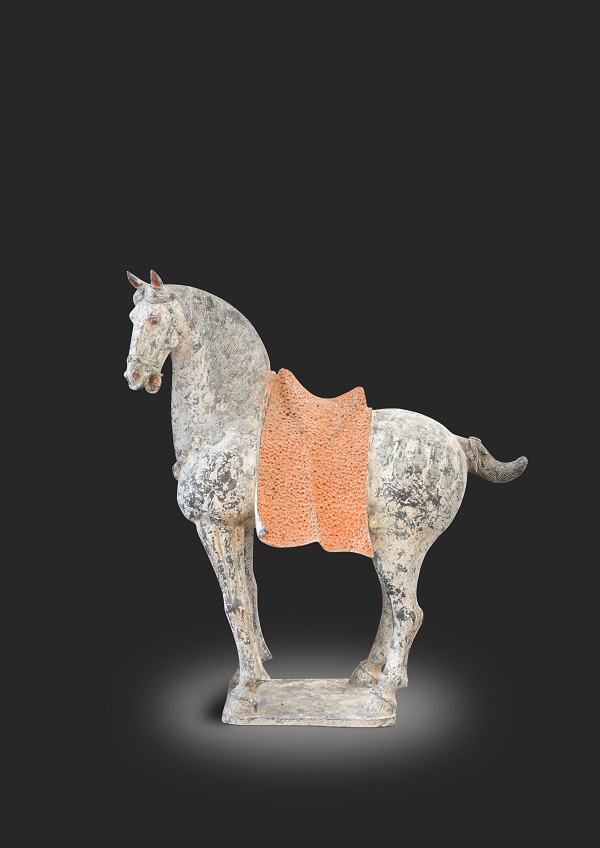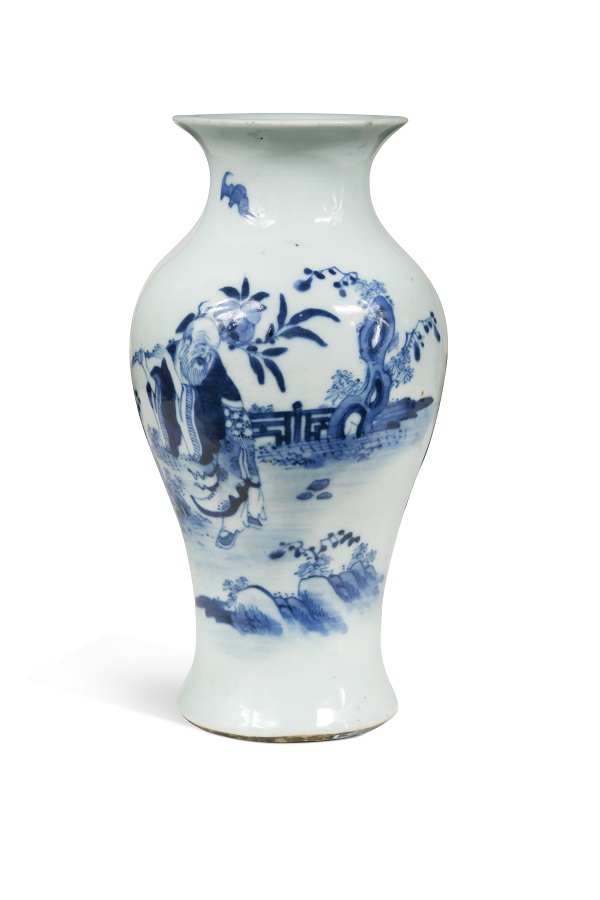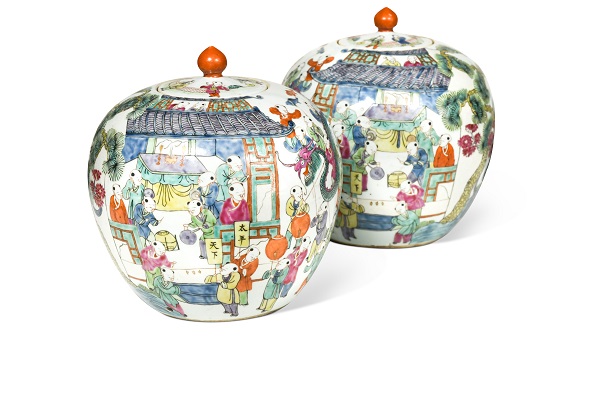There are over 150 lots of Asian Art due to be sold at the Cheffins Fine Sale on 28th and 29th June. Consigned from a variety of collections throughout Europe, lots offered range from ceramics, works of art, furniture to textiles.
Here, Harriet Lusty from Cheffins talks through some of the most exciting pieces set to go under the hammer.
A large painted pottery figure of a standing horse, Tang Dynasty (AD 618-907), estimate £8,000 – 12,000.

This is an impressive example of a Tang pottery horse, not only because of the detail in the saddle and bridle, but the scale of the item which cuts an impressive figure at over 93cm tall. The horse is shown with its head turned slightly to the left, with mouth open and ear pricked forward with an alert expression.
Horses in Tang-dynasty China were revered for their form, speed, and intellect; they played an important role in high society not only for recreational sports, such as hunting and polo, but also as means of transport and war. Only the nobility and imperial households were allowed to ride horses as they represented wealth and power, and in AD 667 the emperor cemented the privilege of owning horses, in an edict prohibiting artisans and tradesmen proprietorship. This right was to be purely an aristocratic honour. However, in some circumstances they were also given as gifts for military operations, and this was seen as the highest of rewards.
Horses were a popular subject in early China. For example, in 636, Emperor Taizong (r.AD 599-649) commissioned six stone sculptures representing each of his favoured wartime horses. The stance of the horses not only reflected power and wealth, but also the colouring reflected the high rank and importance of the owner and his family. Often, powerful sculptures of horses were commissioned for internments in burials for the highest ranking of Tang society. These were placed alongside drinks vessels, furniture, entertainment and other items to sustain the occupant of the tomb in the afterlife.
This example which is offered for sale is likely to have been commissioned for a tomb and is a rare item to come to the market.
A blue and white vase, 18th century, Kangxi Period (1664 - 1722) decorated with a scholar in a rock garden, 22.5cm high, estimate £300 - 500.

This Kangxi vase has an impressive form with a sleek outer body. There is a scholar depicted within a rock garden, painted in the typical Kangxi style of the time with a traditional deep cobalt glaze. Emperor Kangxi was the fourth emperor of the Qing dynasty and he ruled for the longest period of time of any Chinese emperor. This meant it was one of the most productive times for Chinese ceramics. Even though we see many examples of Kangxi ceramics in today’s market, the vase we have is part of a larger collection being entered into the Fine Art sale, from a single owner, but it is particularly good condition with very decorative and intricate painting of the scholar. Note there are also various Buddhist symbols including the bat, symbolising happiness, near the rim, and a small moon to the reverse. Throughout Chinese ceramics it is important to note the presence of the eight auspicious Buddhist symbols, which include: the conch, the endless knot, a pair of golden fish, the lotus flower, parasol, vase, Dharmachakra (The Wheel of Law) and the victory banner.
A pair of Chinese famille rose porcelain ginger jars and covers, late Qing Dynasty, circa 1910, each decorated with numerous ‘hundred boys’ enjoying a festival, 23cm high, estimate £300 - 500.

These ginger jars are both decorated in bright and vivid colours showing a ‘hundred boys’ celebrating Spring Festival. The exterior with a multitude of boys engaged in different leisurely pursuits, including dragon boat racing, dancing and kite flying. The ‘hundred boys’ is symbolic of the Confucian ideals of fulfilment and prosperity, and advancement of sons. The depiction started to appear in China during the Southern Song period – mainly popularised by the court artist Su Hanchen, but also appeared on other ware including jade and textiles in the Ming and Qing dynasties. The vibrant colours, the ‘hundred boys’, and a figural movement of their robes are still popular in the market today and make a colourful statement to any home.
The catalogue for the June Fine Sale will be going live over the next few weeks, keep an eye on our website for more information.